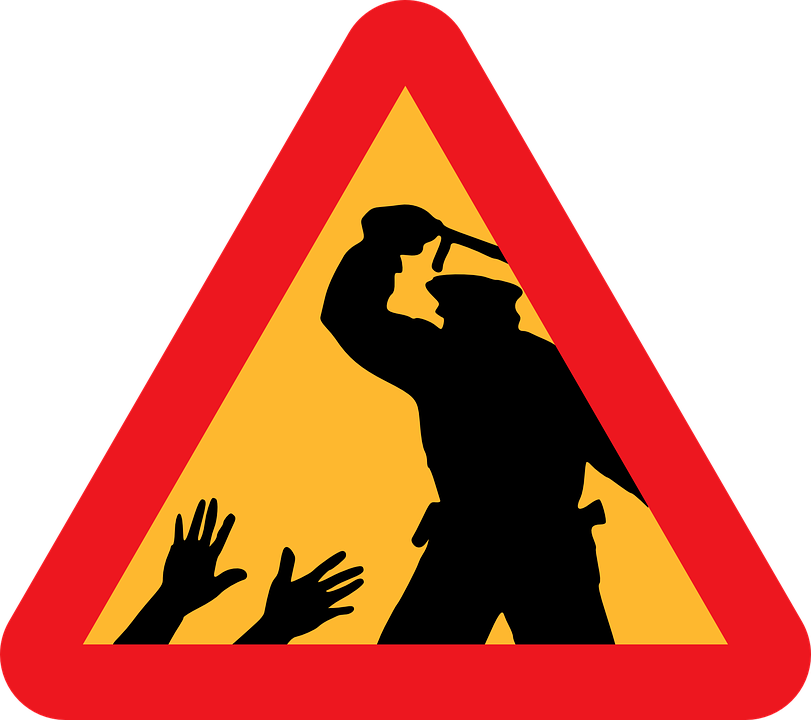
It is difficult for the public to comprehend being the victim of violence at the hands of a police officer, as they are entrusted to “serve and protect.” However, it is important for civilians to remember that the stresses of the job can have a profound emotional impact on uniformed officers in all service sectors, from police to firemen and even health care workers. Imagine a job that exposed you to violence, death, personal risk, and some of the most unsavory aspects of human nature and society daily?
Nonetheless, it is illegal for police officers to use force that is determined to be in excess to the amount required to secure an area, the officer’s personal safety, or the safety of others. Do you know how to determine the difference between a difficult arrest and a case of police brutality? We will discuss some of the factors, and provide tips and considerations for citizens who wish to report suspected incidents of police brutality to the appropriate authorities.
Defining Police Brutality by Legal Terms
What comes to mind when you think of instances of police brutality? Television and social media have done a good job of blurring the lines between excessive force (brutality) and what is necessary for police officers to protect the public (and their own personal safety) with highly trained security measures.
Police brutality is the “use of grossly excessive or unnecessary force (including deadly force) against civilians, even if they are determined to be assailants in a crime.” Where the confusion begins is the determination of “reasonable force,” which can be interpreted in a variety of different ways, depending on the crime, activity in the area, or actions by the assailant.
Police are permitted and trained to use a variety of different weapons to subdue an assailant. They can use nerve gas, batons, pepper spray, guns, and physical self-defense maneuvers, including pinning a suspect to the ground on his or her chest. Police are also trained to restrain individuals from causing additional harm to other civilians, to officers or to themselves, using plastic restraints, ties, and handcuffs.
It is confusing because police are empowered by the law to take violent action against criminals, suspects, and assailants. If an assailant is fighting back, and endangering himself or the officer, additional physical power or violence may be required to subdue and safely restrain and transport the individual. But where police brutality is suspected starts when false arrests or wrongful death occurs; verbal or sexual abuse and exploitation; corruption; racial profiling; and political, gender, or social stereotypes are used as part of the violence done to a suspect, civilian, or assailant.
Which U.S. Cities Have the Highest Rate of Police Brutality Cases?
From January 2011 to September 2014, Chicago, Illinois received the designation of being the leading city in the United States for cases of police brutality. Settlements and civil rights suits within that period in Chicago totaled more than $129 million dollars. Los Angeles, California was the next leading American city for settlements in civil rights violations and police brutality cases, which totaled just over $31 million dollars, while Philadelphia placed third with $28.2 million dollars in awarded settlements. Dallas, Texas; San Jose, California; Indianapolis; Baltimore; Fort Worth; and Austin, Texas were also named in the top ten cities with escalated complaints of police brutality.
Many individuals argue that population density has much to do with instances of racial intolerance and police brutality cases. However, New York City, which has a population of more than eight million people, did not rank on the list of cities with significant reports of police violence and misconduct. Los Angeles is the second largest city in the Unites States, with more than 3.7 million residents.
Factors that Contribute to Police Brutality
Did you know that police officers and law enforcement officials are required to engage in counseling, cognitive training, and therapy due to stresses of the job? In one particular recent case, children in Minnesota were forced to sit on the curb beside their dead and bleeding family pet; a dog that was shot when police were called to the home as a result of a violent incident. The media reported both the shooting of the dog (which is legal if police determine the dog is a physical threat), and the fact that children were handcuffed beside their dead pet as “above and beyond reasonable measures” and bordering on the line of psychological cruelty.
Other factor that experts have indicated as contributory to incidents of police brutality are:
Poor arrest and punitive measures for many officers accused of inappropriate or excessive conduct.
Settlements that are filed against police departments are fiscally paid for by taxpayers, not by the offending enforcement division. There is no financial consequence to the department.
Contemporary police are equipped with devices of war, including tasers, pepper spray, and semi-automatic guns which are tactical, and exceed the needs of standard neighborhood and domestic response.
Racial tensions, including media backlash against incidents involving ethnic minorities, have an impact on increasing departmental tensions between officers and the public, while others claim that there is the same degree of police brutality there has always been, but it is more obvious (and reportable) thanks to the prevalence of smartphones and social media sharing.
The Responsibility of Citizens to Report Police Brutality
Whether choosing a criminal lawyer in the Bronx, or a major city where police brutality cases have escalated over the past decade, it is important to successfully report and seek damages for personal injury. If you have witnessed an incident of police brutality, offer your statement to the police or to the victim and their families; it may help build a successful case if the enforcement officer is in the wrong.
A police report can be made, and even volunteered on an anonymous basis, to report recurring incidents that involve specific officers. Remember that there is a Department of Internal Affairs which will investigate officers who have been repeatedly charged with violence and brutality, and they will move to prosecute based on evidence. The courts will provide reparation and settlements for victims deserving of compensation, for being undeserving of gross negligent or excessive violence from a law officer.
